Rosa Parks, an iconic figure in the civil rights movement, remains an influential symbol of courage, resilience, and the power of peaceful protest. While her refusal to give up her bus seat in Montgomery, Alabama, is widely known, there are numerous fascinating facts about Rosa Parks that go beyond the history books.

Why is it important to learn facts?
Facts are not only fun bits of knowledge to share with others but they also provide us with accurate information about the world around us. They serve as building blocks of knowledge, allowing us to understand and make sense of various subjects, events, and concepts. By learning facts, we gain a solid foundation upon which we can develop critical thinking skills and form well-informed opinions.
Looking for new facts to navigate the complexities of the world with confidence and understanding. Then check out our Hurricane facts, space facts, and fascinating facts about Mexico.
Facts about Rosa Park
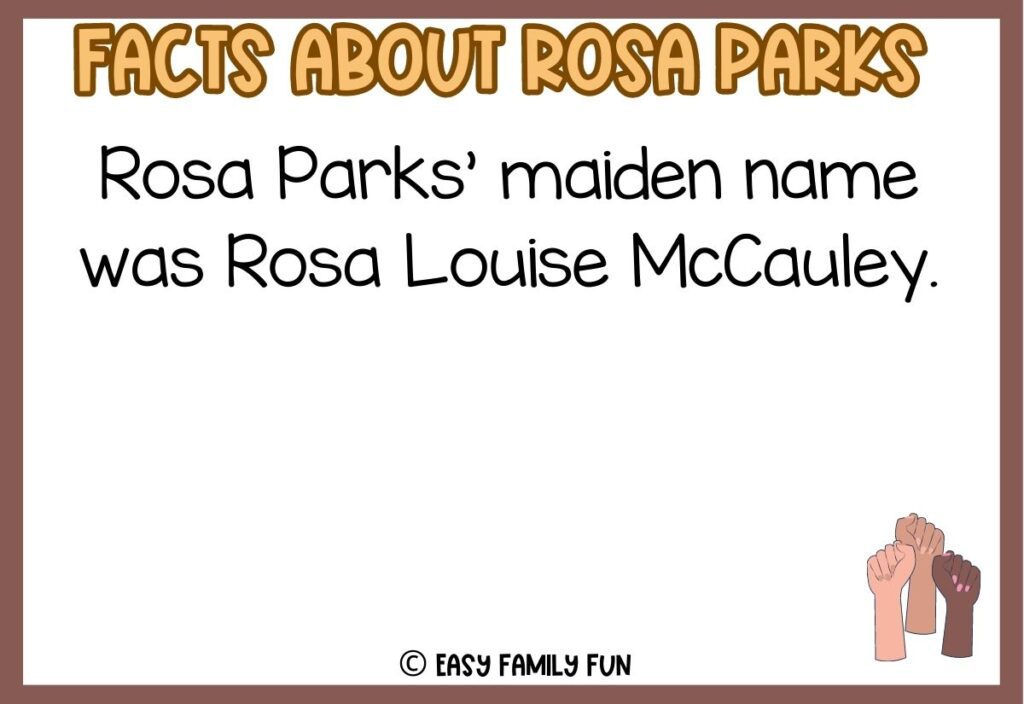
- Rosa Parks’ maiden name was Rosa Louise McCauley.
- She was born in Tuskegee, Alabama on February 4, 1913.
- Rosa Parks had one brother, Sylvester, who was born in 1915.
- She moved with her mother and brother to live with her grandparents on their farm in Pine Level, Alabama after her parents separated.
- It was on the farm that Rosa and her family experienced regular threats from members of the Ku Klux Klan.

- Rosa’s mother was a teacher and taught her at home during the earliest years of her life.
- When she began attending a girls school at age 11, she was exposed to more of the racism and segregation that was prevalent at the time.
- Rosa married her husband Raymond Parks in 1932 at the age of 19.
- Rosa’s husband was a barber and fellow civil rights activist.
- Circumstances forced Rosa Parks to leave school at age 16, but she would return after she married to obtain her diploma with the encouragement of her husband.

- Rosa was one of the few black girls of her time to attain her high school diploma.
- She initially worked as a housecleaner, and then later a seamstress.
- Rosa joined the Montgomery chapter of the NAACP as the chapter secretary in 1943.
- Rosa Parks is most famous for her refusal to give up her seat to a white man on a bus in Montgomery, Alabama December 1, 1955, over ten years after she joined the NAACP.
- She attests that she did not intentionally walk on to that bus with the intention of refusing to give up her seat.
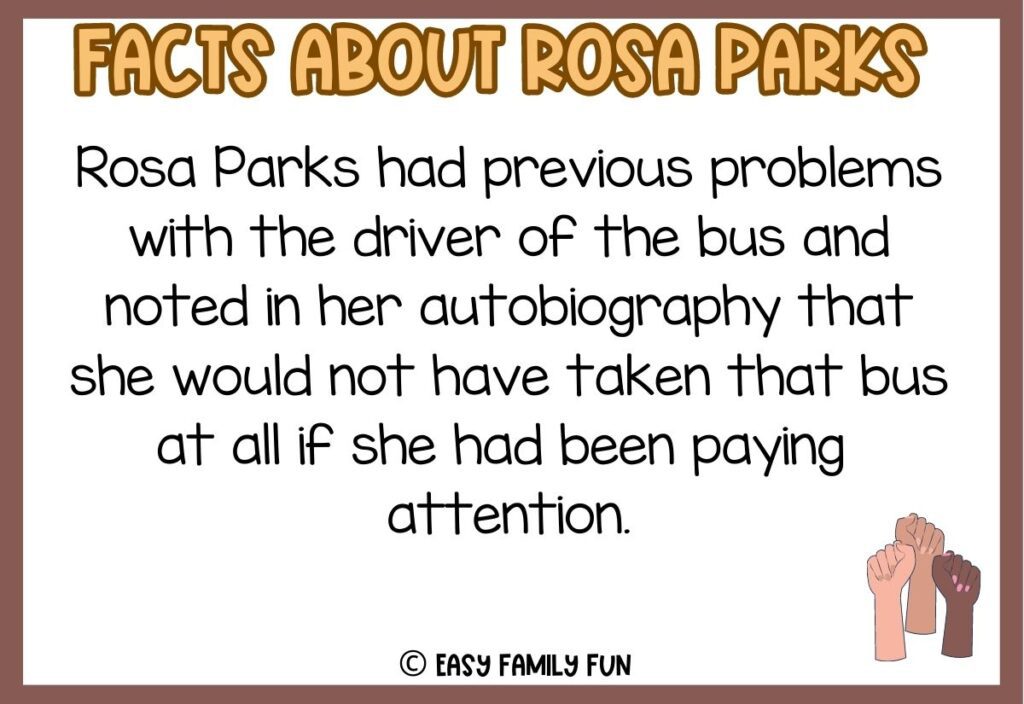
- Rosa Parks had previous problems with the driver of the bus and noted in her autobiography that she would not have taken that bus at all if she had been paying attention.
- When she refused the bus driver’s demand to give up her seat on that day in Montgomery, Rosa Parks was sitting in a section that was open to African Americans.
- While there are claims Rosa refused to give up her seat because she was tired, she refused because she knew this was her time to stand up to racism and segregation.
- Her refusal to give up her seat led to her arrest.
- Rosa was not the first African American or African American woman to be arrested for refusing to give up her seat on a bus in Montgomery, Alabama.
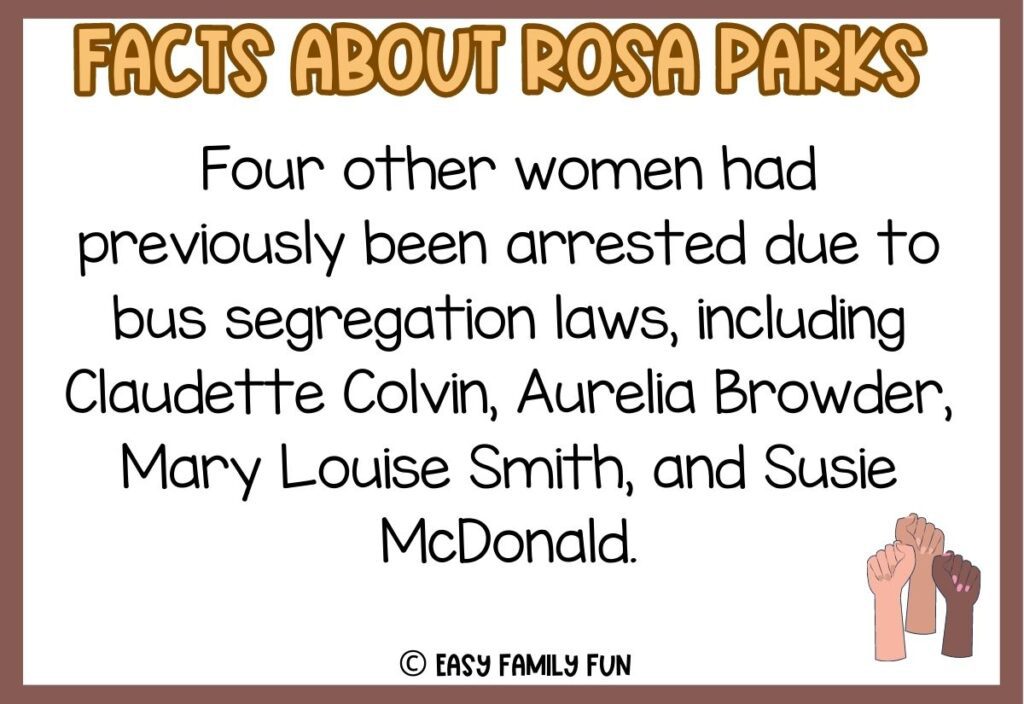
- Four other women had previously been arrested due to bus segregation laws, including Claudette Colvin, Aurelia Browder, Mary Louise Smith, and Susie McDonald.
- Those first four women were the plaintiffs in the Supreme Court case that would make bus segregation unconstitutional almost a year after Rosa Parks’ famous refusal.
- Rosa Parks’ arrest was different as she was the first to have the resources to bring attention to her arrest due to racial discrimination.
- Rosa was backed by both the local chapter of the NAACP and the Montgomery Improvement Association in her fight against segregation.
- Rosa Parks’ refusal on the bus that day inspired the leaders of the Black community in Montgomery, Alabama, including Dr. Martin Luther King Jr. who would lead the Montgomery Bus Boycott.
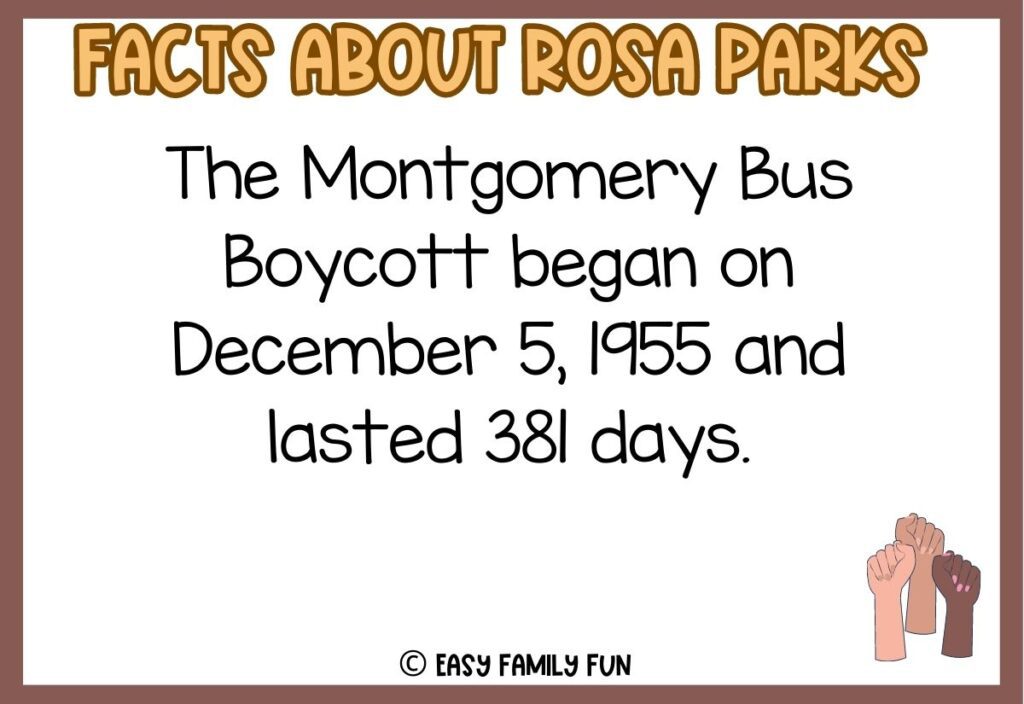
- The Montgomery Bus Boycott began on December 5, 1955 and lasted 381 days.
- It simply entailed a boycott by African American members of the community boycotting riding the bus.
- It was so effective because it deeply impacted the bus company’s profits since African Americans composed 70% of their riders.
- The boycott inspired by her act fired up other protests across the United States.
- Even though the Supreme Court decision made bus segregation unconstitutional on November 13, 1956, it was not until a court order was issued on December 20th that buses integrated the seating.
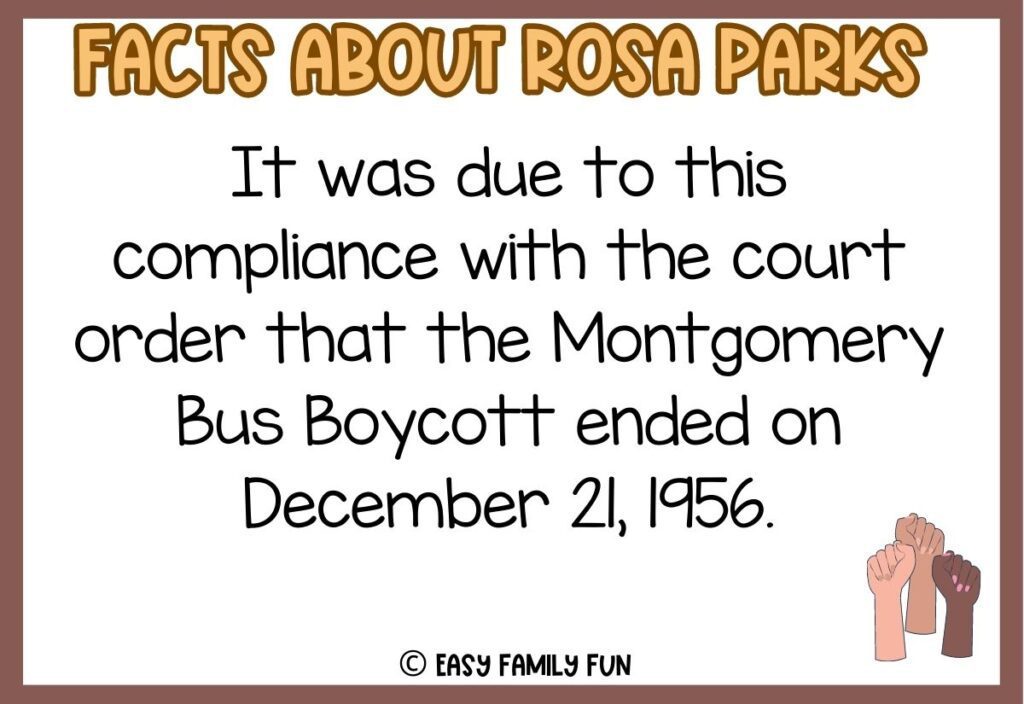
- It was due to this compliance with the court order that the Montgomery Bus Boycott ended on December 21, 1956.
- Rosa Parks became known as “the first lady of civil rights” and “the mother of the freedom movement” because of her firm response she took that day.
- Her very active role in the civil rights movement did not end with the boycott.
- Rosa Parks and her family moved to Detroit, Michigan in 1957, where she would stay active in her efforts to stand up for expanding civil rights.
- She worked as one of the staff for Michigan Congressman John Conyers, Jr. from 1965 to 1988.

- While Rosa Parks was an instrumental part of the civil rights movement, she felt that more needed to be done to continue to advocate for civil rights.
- Rosa Parks and her husband cofounded the Rosa and Raymond Parks Institute for Self-Development in 1987.
- This institute offered career training and education on the civil rights movement history to young adults and teenagers.
- Rosa Parks died in 2005, and her body lay in state in the rotunda of the U.S. Capitol.
- She was the first woman and only the second Black person to receive the distinction and honor.

- The Southern Christian Leadership Conference created the annual Rosa Parks Freedom Award in 1963.
- The NAACP awarded Rosa Parks the Spingarn Medal in 1979.
- She was awarded the Golden Plate Award by the Academy of Achievement in 1995.
- President Bill Clinton awarded her the Presidential Medal of Freedom in 1996.
- She was also awarded the Congressional Gold Medal by the U.S. House of Representatives in 1999.
Do you know any other facts about Rosa Parks? Be sure to leave them in the comments so we can all learn more together!
How Do I Print A PDF?
You’ll need a program that supports PDFs. Adobe Acrobat is a great option. Open the program, click file, then print. Select your printer and the number of copies you want to print. Be sure you click double-sided if you want it to print on both sides.
Can I Resell These?
You may not resell any printable that you find on our website or in our resource library. You may use them for class parties, at church, at home, or in the classroom. You may get these printed at an office supply store or copy center at your own expense.
